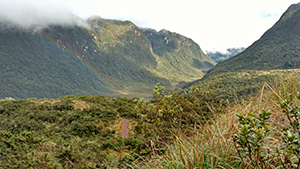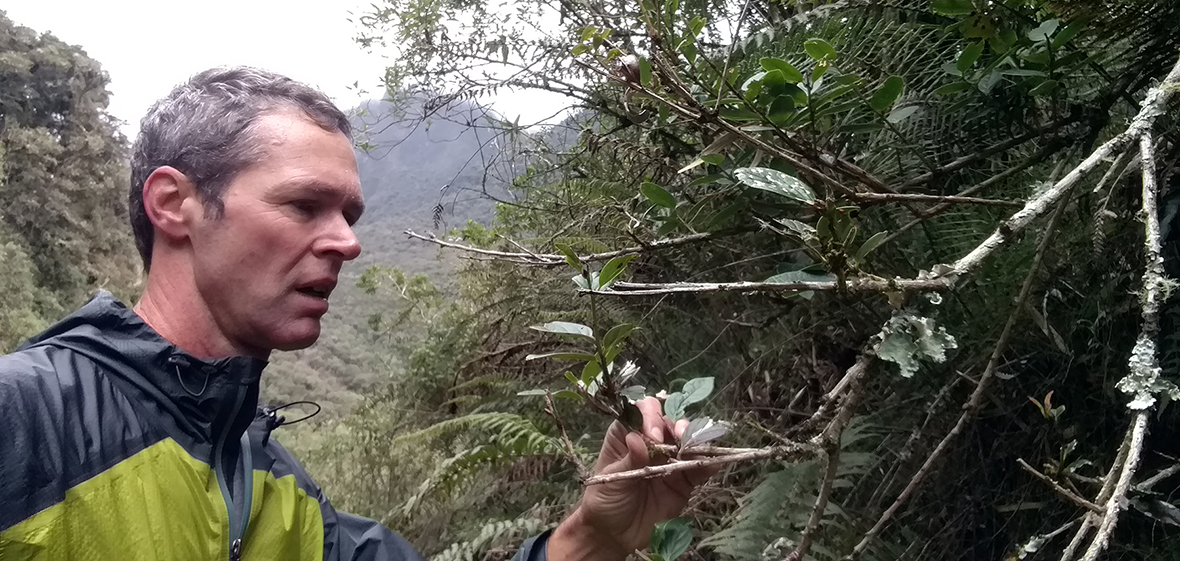An Ecuadoran wild pepper species, newly discovered by collaborators in the College of Science, might be home to about 40-50 species of insects and provides a wealth of opportunities for studying chemical diversity. The timing of this discovery bears special significance because of a proposed new chemical ecology program at the University. Through this interdisciplinary effort, plants from the Great Basin and around the globe take on a whole new, and very important, meaning as scientists find natural products that may have a huge impact on the discovery of new therapeutics.
"We have a new take on this endeavor as a general strategy - using ecology to guide our chemical discovery and chemistry to better understand ecological interactions and diversification processes," Chris Jeffrey, associate professor in the chemistry department, said. "The approach is non-traditional and what started as a discussion between (biology professor) Lee Dyer and me about five years ago, has now grown into a huge collaboration that is far beyond the dreams that we ever had when it started."
The collaboration includes scientists around the world and, in an extremely successful grassroots approach, has included citizen scientists working side-by-side as part of the team conducting hands-on research across the Americas. The National Science Foundation and the Earthwatch Institute have provided most of the support for the program, which has also received new support by the locally based Sarah A. Daugherty Foundation.
Dyer and his colleagues, Jeffrey and Lora Richards from the Ecology, Evolution and Conservation Biology Program, aim to develop the University's internationally recognized expertise in the field of chemical ecology and modern natural products chemistry into the proposed Nevada Institute of Chemical Ecology. The Institute will formalize the University as the premier institution for conducting research at this unique interface between chemistry and biology.
Researching new medicines across the Americas
The collaborative group regularly travels to Central and South America, where they team with scientists and local parataxonomists for the research on peppers and related rainforest organisms.
"For example, our team of scientists has made nearly 30,000 observations of over 100 black pepper relatives over 20-plus years, and found that the new plant species supports the largest number of specialized caterpillar and predator species recorded for species in the black pepper family to date," Dyer said.
 The team also started recognizing the potential therapeutic value of the compounds in many of the plants they study. They will be looking at plants closer to home with a new project, the "Bioprospecting Biotic Interactions of the Great Basin," that will be part of the new chemical ecology program.
The team also started recognizing the potential therapeutic value of the compounds in many of the plants they study. They will be looking at plants closer to home with a new project, the "Bioprospecting Biotic Interactions of the Great Basin," that will be part of the new chemical ecology program.
"One of our next major collaborative projects will be focusing on the Great Basin of Nevada," Dyer said. "We'll be bioprospecting, looking for things like undiscovered anti-fungals, antibiotics and natural insecticides. The focus on this relatively unexplored region of the world will yield novel natural products with therapeutic and agricultural potential."
The chemical ecology institute will utilize the team's multi-disciplinary expertise to develop an approach that uses macro-scale genomic and ecological data and metabolomics approaches to guide the discovery of small molecules with exceptional biological activities.
Bringing together an institute
Initial plans for the proposed institute focus on the discovery of new anti-fungal compounds and utilize expertise in the area of infectious disease at the University of Nevada, Reno School of Medicine, the National Institutes of Health and other companies and institutions.
{{RelatedPrograms}}
At this nascent stage of the program, the collaborative effort involves 15 principle investigators from the University and has already resulted in a number of large federal multi-scientist grants that produced high impact papers, and the program has hosted renowned chemists and biologists from around the world.
"In the past eight years, we have received more than $10 million combined funding to our University and our partner universities from the National Science Foundation and international funding agencies for specific chemical ecology research projects," Dyer said.
A donation from acclaimed biomedical researcher Mick Hitchcock of $1 million has invigorated the chemical ecology program and helped steer efforts to formalize the program into the chemical ecology institute.
"With support such as this, our collaborative approach and internationally recognized expertise, the proposed institute is poised to make some fantastic scientific discoveries," Jeff Thompson, dean of the College of Science said. "It's exciting to see the focus come home to Nevada and the Great Basin as well."












